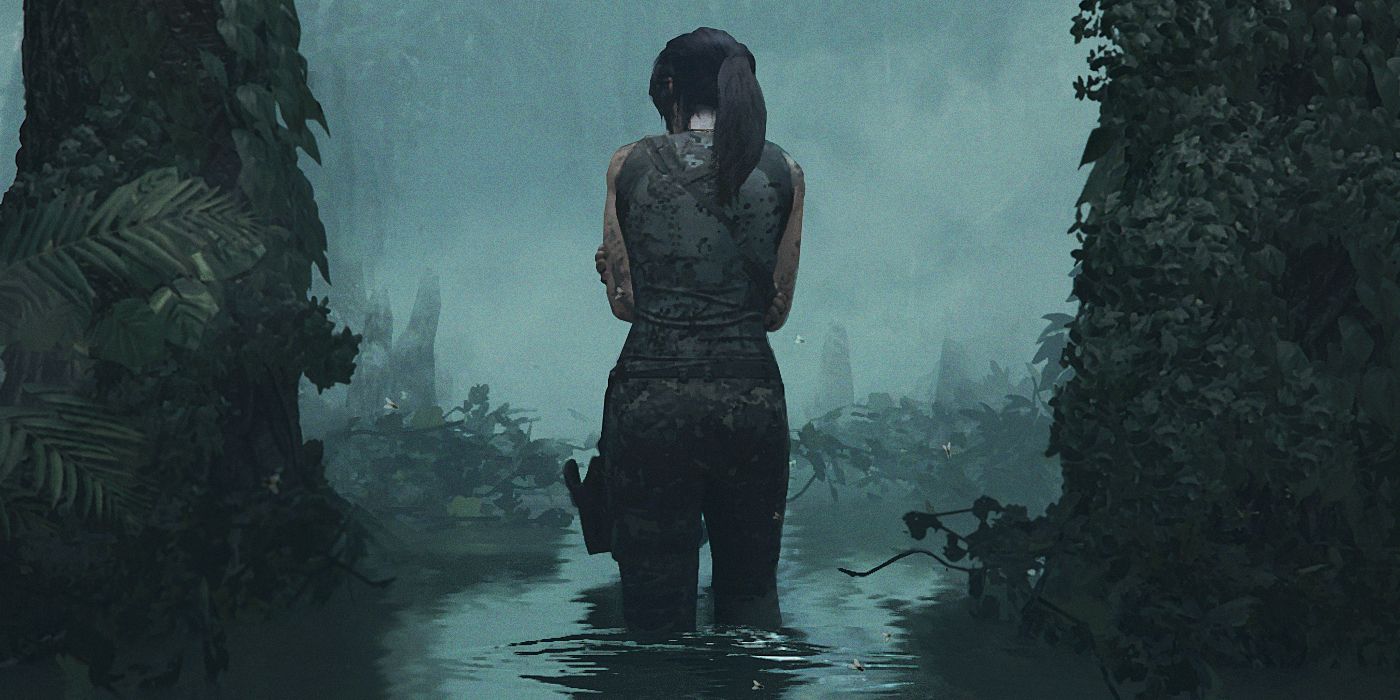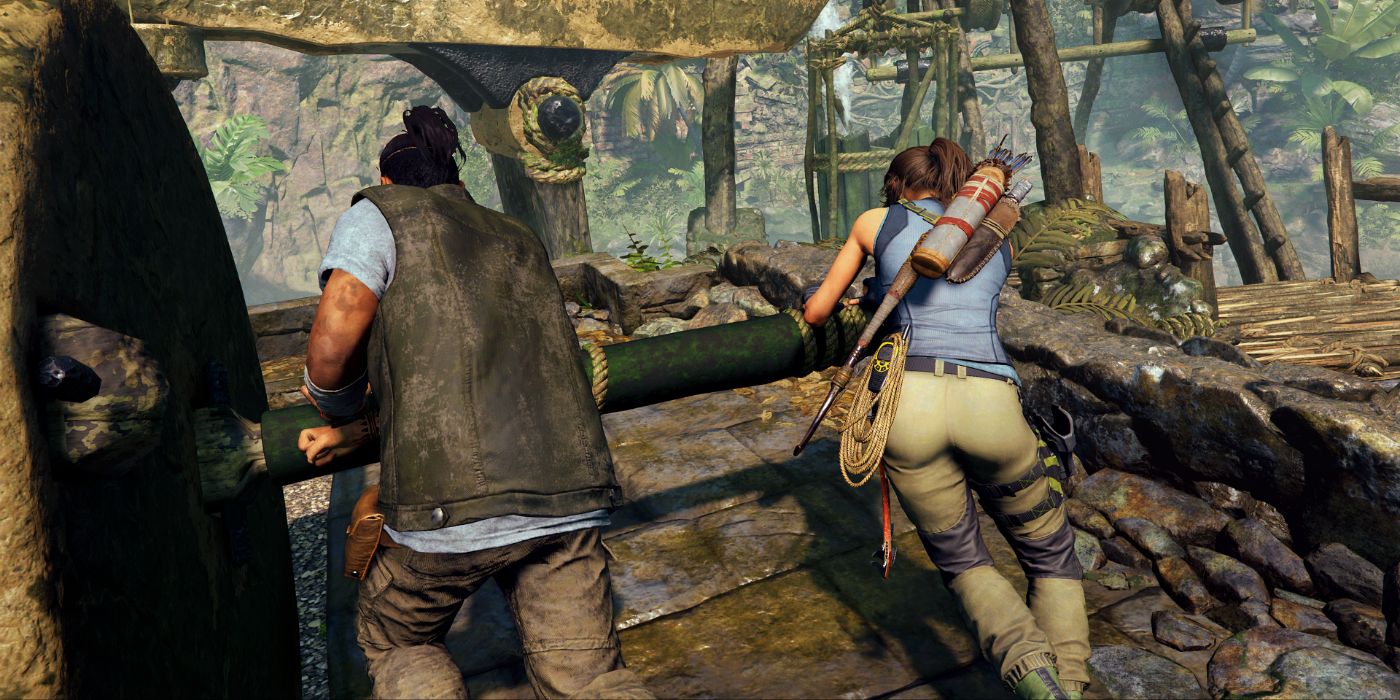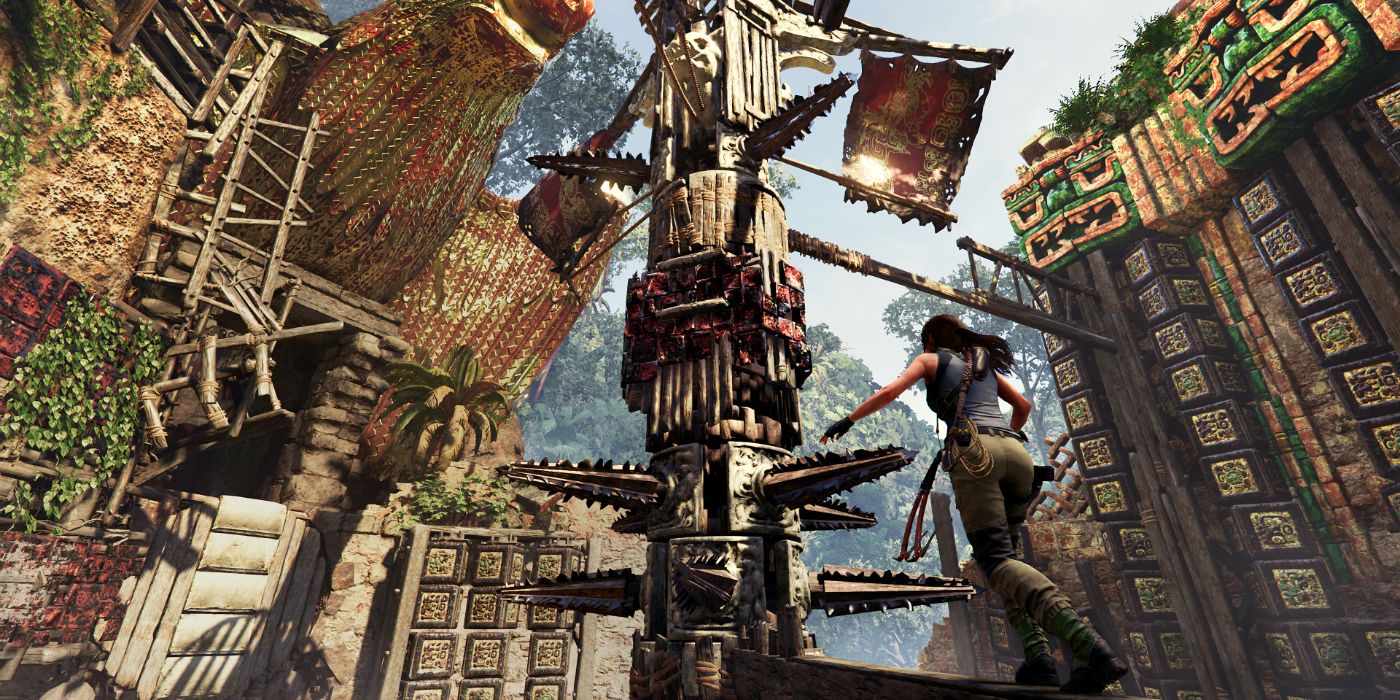Square Enix's Shadow of the Tomb Raider releases quite soon, and Screen Rant recently had the opportunity to go hands-on with the sequel and play through approximately the first five hours of the story. Ever since the game was announced earlier this year, Eidos Montreal (who has taken over as lead developers on the project from Crystal Dynamics) has been promising an epic conclusion to Lara Craft's origin story as she finally becomes the tomb raider that everyone knows and loves.
The Shadow of the Tomb Raider demo that we played at an event in Manhattan Beach takes us through the prologue and then the beginning of the story, which takes place shortly after the events of 2015's Rise of the Tomb Raider, with Lara and her companion Jonah heading off on another expedition - to Latin America. By changing up the setting, Eidos Montreal has created a new environment that produces a vastly different aesthetic and feel to the iconic franchise, which also gives players a new taste at what Lara Croft can do in the wild, particularly in the jungle. And the developers are really taking players into the jungle with the new game, including bringing jaguars into the mix.
Related: Shadow Of The Tomb Raider Gameplay Makes Lara Croft The Predator
From the get-go, it's clear that the third installment in Square Enix's rebooted Tomb Raider trilogy pays respect to the two games that came before it, bringing back fundamental gameplay mechanics such as wall climbing while also improving upon them for smoother traversal. Everything is meant to be evocative of a cinematic adventure story that arguably rivals the Uncharted video game series. But that's not surprising since the two tend to borrow heavily from each other from time to time - and that is no less true for Shadow of the Tomb Raider, which has its fair share of context sensitivity events.
Although the overall game can't be expressly described as being linear, since there is a bit freedom for players to explore certain areas and take side missions as they choose, once a story mission starts, they can only move forward from there. Players cannot take a secondary route to complete the objective if they wanted to; there is only one route to take - though there is some variability when passing through an area filled with enemies (players can fight their way through, sneak around, stealth attack, etc.) - and figuring that part out is a big portion of the fun. The other portion, of course, is completing the puzzles and figuring out where to go next. This is an adventure game, after all, one that gives players a real sense of who Lara Croft is as a person. It's a deconstructionist tale that not only explores Lara's motivations but also distances her from the savior tropes that have plagued video games (and various other forms of media) for generations.
Irrespective of the game's generic stealth mechanics, such as hiding in bushes to avoid detection, much of the gameplay is well-rounded and works to amplify Lara's intrinsic abilities as a tomb raider in the new title. And the best part? Solving all the puzzles. Make no mistake, Shadow of the Tomb Raider is an action-adventure game, first and foremost, but Eidos Montreal has clearly gone to great lengths to make the game's puzzles an adventure in and of itself.
By far the greatest gameplay mechanic that has been added into the third installment is the mud system, which not only augments Lara's abilities as a stealth fighter but also sets the game apart from other stealth action-adventure titles such as Assassin's Creed and Metal Gear Solid. Grabbing enemies while leaning against a mud wall can be... brutal, to say the least. Shadow of the Tomb Raider certainly doesn't hold back. The mud system is something that was teased in the previous demo builds, but we were able to make full use of it this time around, taking different approaches to combat enemies than what would've been possible in past installments.
Although the enormous trap mechanism (pictured above) towards the end of the build is what will impress most gamers at first, one of the simplest tasks is actually what confused players the most at the event we attended. At one point, we were tasked with figuring out how to use a bridge to get to the other side of a river, but to do so required using a rope attached that was attached to an arrow. It was easy to figure out all the necessary steps, but there was a specific area that players had to shoot the arrow from - and finding that exact location was where the difficulty arose. While there were developers on-hand to guide us through any tough trials we faced, players at home will have the option to temporarily lower the game's difficulty in order to get past certain parts.
With a plethora of abilities - some old, some new - it's up to the player to figure out which ones to use in which situations in order to push forward and complete the objective. So, while the game is linear to a great extent, it doesn't hold the player's hands all the way through. Instituting a degree of difficulty at an elemental level is crucial for this game and this series to continue to survive and push boundaries. Overall, Shadow of the Tomb Raider is more of the same - gameplay and story-wise - compared to the last two installments from Crystal Dynamics, but this time around, Eidos Montreal has managed to put a unique spin on things by taking what they've learned with Deus Ex and applying them to what appears to be the final installment in this Tomb Raider series - at least until Square Enix decides to give Lara Croft another adventure.



